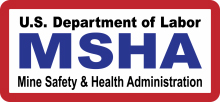Preventing MSHA’s POV enforcement
 The old adage “an ounce of prevention is worth a pound of cure” applies to the Mine Safety & Health Administration’s (MSHA) Pattern of Violations (POV) enforcement powers.
The old adage “an ounce of prevention is worth a pound of cure” applies to the Mine Safety & Health Administration’s (MSHA) Pattern of Violations (POV) enforcement powers.
It is far better to take steps to prevent a mine getting on POV in the first place than to have to endure the consequences of being on POV and the difficulty of getting the designation removed.
The Federal Mine Safety & Health Act gives MSHA the power to place any mine on POV enforcement where that mine has a pattern of Significant & Substantial (S&S) violations of MSHA’s mandatory mine safety and health standards. When a mine is placed on POV, every violation MSHA designates as S&S will result in issuance of a withdrawal order.
As with other withdrawal orders, a POV order requires all miners to stay out of the affected area or not operate the cited equipment, until MSHA lifts the order – except those miners working to abate the violation. Any mine placed on POV will receive a lot of S&S withdrawal orders. Being on POV can shut down a mine’s ability to operate.
The only way to get off of POV is to complete an MSHA inspection with no S&S violations issued. That is not easy to do at a mine branded as a POV-deserving operation.
When it comes to POV, the ounce or two of prevention, though not always easy, is better than the pound of cure.
Pattern of Violations criteria
Of course, an effective safety and health program is the very best ounce of prevention against POV. But even mines with the best safety programs sometimes receive citations.
Every mine at one time or another will receive citations that are overwritten or should never have been issued in the first place.
Conferencing and contesting these citations is an important ounce of prevention that can have a significant effect on preventing a mine from falling into POV status.
MSHA has decided that in order for a mine to be considered to have a POV, the mine must meet certain criteria. These criteria are heavily based on violation history over a 12-month period.
The POV criteria are complex and described in detail on MSHA’s website. They show how many times a mine has been issued types of citations. It’s important for mine operators to take a close look at all citations that count toward POV. Those citations include:
■ Citations designated as S&S
■ Citations with negligence findings of “high” or “reckless disregard”
■ Failure to abate orders – 104(b)
■ Unwarrantable failure violations – 104(d)
■ Training violations – 104(g)
■ Imminent danger orders – 107(a)
Where MSHA has wrongly issued any of these types of citations or orders, operators should try to get them corrected. Even where a mine does not meet all of the criteria for POV, it can be hard to predict if that will still be the case months into the future.
The first ounce of prevention – maintaining a good violation history – is critical to success.
Corrective Action Program
Another ounce of prevention comes into play when an operation finds itself close to meeting the POV criteria. MSHA’s policy allows for a mine that is close to POV to develop a Corrective Action Program (CAP). If MSHA approves the CAP and the mine is successful in reducing S&S violations, MSHA will not place the mine on POV.
The CAP is an action plan tailored toward reducing the number of S&S citations issued based on the particular history of violations at that mine. MSHA outlined in guidance documentation what should be included in the CAP. CAPs typically include additional training, operational improvements, enhanced area exams and periodic progress reports to MSHA.
Operators should monitor their status under the POV criteria using the POV monitoring tool on MSHA’s website. If a mine is close to meeting the POV criteria, the operator must be proactive in developing a CAP and sending it to the district manager. The CAP must be submitted before the mine is placed on POV.
Although many in the industry expect MSHA to focus increasingly on compliance assistance, MSHA officials continue to remind mine operators to be diligent about monitoring their status on MSHA’s online POV monitoring tool. MSHA districts also continue to review CAPs proposed and in place at mines across the country.
Bill Doran and Margo Lopez are with the national labor, employment and safety law firm Ogletree Deakins. They can be reached at william.doran@ogletree.com and margaret.lopez@ogletree.com.









